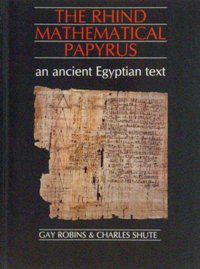| Main » Ad Board » ДРЕВЕН ЕГИПЕТ И АФРИКА » Наука |
| 01.01.2019, 10:27 | |
Математическият папирус Ринд е едно от най-старите методически учебни помагала в света. Запазеният до наши дни препис е направен от обезсмъртилия името си писар Ахмос през 33-та година от управлението на хиксоския фараон Апопи (Апофис, ок. 1574-1540 г. пр.н.е.) от XV династия през Втория преходен период и вероятно довършен и редактиран през 11-та година от царуването на наследника му Хамуди (ок. 1540/1534-1522 г. пр. н.е.) - последния владетел на хиксосите в Египет. Загубеният оригинал обаче, както е отбелязано в бележка на самия писар, бил много по-стар: от епохата на Аменемхет III (1860-1814 г. пр. н.е.) на XII династия : златният век на Средното царство. В този смисъл паметникът предава почти директно от извора опита и знанията на последните строители на пирамиди в Древен Египет. - на английски език, от MEGA, формат PDF.Сваляне с ляв бутон (downloading by left button) и после през бутона Download.
| |
| Views: 1347 | Placed till: 01.02.2019 | Rating: 0.0/0 | |

